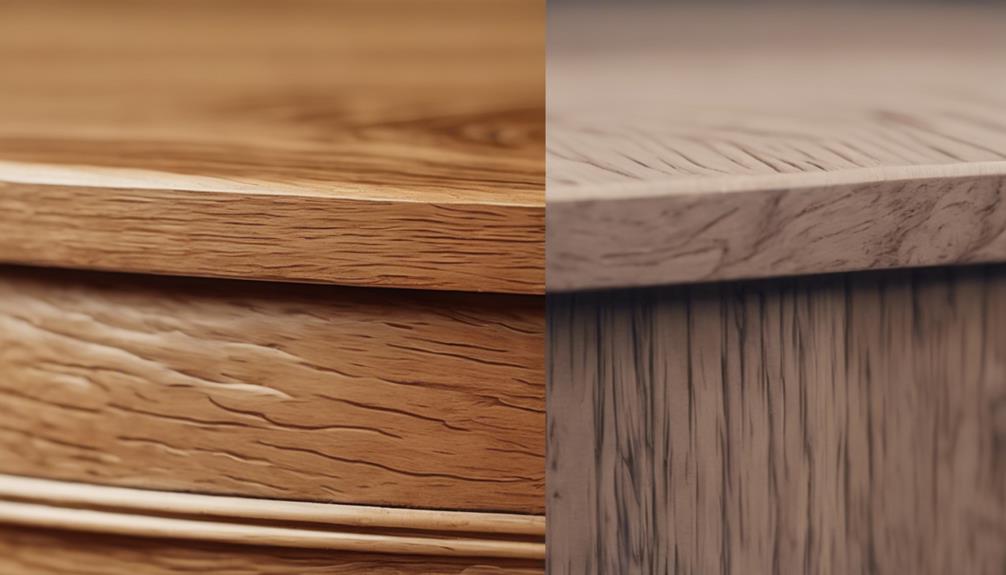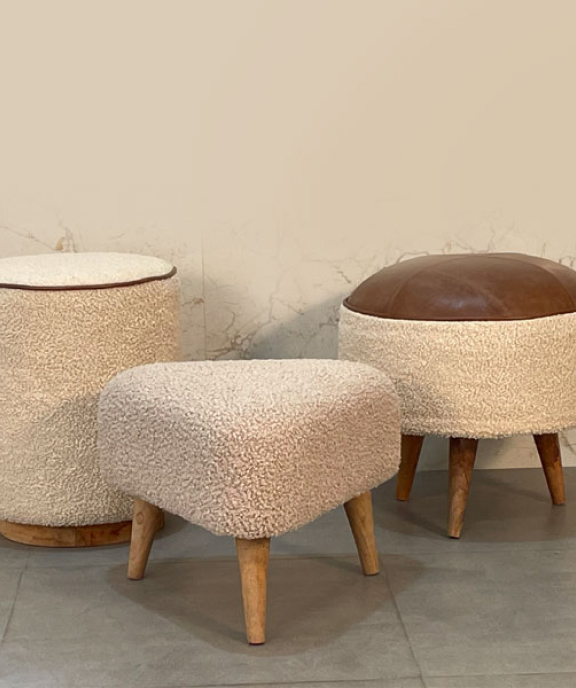When selecting wood for furniture, consider the timeless appeal and durability of traditional wood versus the cost-effectiveness of engineered options. Traditional wood offers natural beauty and longevity, making it a solid investment.
Engineered wood is eco-friendly and provides versatility at a lower cost. Your choice should be based on your budget and durability requirements. Solid wood may require a higher initial investment but proves cost-effective in the long term.
Engineered wood is a sustainable choice without compromising quality. Understanding the characteristics of each wood type is crucial in aligning with your objectives and principles.
Understanding Traditional Wood
Traditional wood, such as teak, rose, and cedar, is valued for its natural beauty, durability, and cultural significance in furniture making. These woods offer unique characteristics, textures, and grains that enhance the aesthetic appeal of furniture, giving each piece a timeless and elegant look.
Traditional wood is known for its sturdy nature, providing furniture with a solid and reliable structure that can last for generations. While traditional wood furniture may be more expensive than engineered wood, its durability, easy maintenance, and repairability make it a worthwhile investment for those seeking long-lasting and enduring furniture pieces.
Exploring Engineered Wood
In the realm of modern furniture design, engineered wood offers a cost-effective and sustainable alternative to traditional wood. This composite material, created by binding wood shavings with resin, includes types such as plywood, MDF, HDF, and particle boards. Engineered wood is valued for its affordability, versatility, and eco-friendliness.
It's lightweight, durable, and easy to work with, making it suitable for intricate designs. Its production process involves utilizing recycled wood particles, reducing the demand for solid wood resources. Engineered wood is customizable in sizes and shapes, convenient for assembly, and installation.
It's environmentally friendly, lightweight, and manageable, presenting a budget-friendly option for various furniture styles.
Making the Right Choice
When deciding between traditional solid wood and engineered wood for furniture, consider your budget and required durability.
Key points to consider include cost, with solid wood being more expensive upfront, and durability, with solid wood lasting longer.
Solid wood offers timeless beauty and easy maintenance, enhancing any room's appearance.
Factors to Consider
Considering the durability and longevity of solid wood for furniture is essential. Solid wood is known for its strength and resilience, lasting for generations with proper care, making it a durable choice for furniture.
Engineered wood offers cost-effectiveness and is often more affordable than solid wood, providing eco-friendly options through effective use of composite materials. When deciding between the two, it's important to weigh the cost effectiveness of engineered wood against the long-lasting durability of solid wood.
Solid wood may require a higher initial investment but can be cost-effective in the long run due to fewer replacements and repairs. Engineered wood offers a budget-friendly alternative without sacrificing durability, making it a practical option for those seeking affordability without compromising quality.
Sustainability and Environmental Impact
In furniture production, choosing engineered wood over solid wood is beneficial for sustainability and environmental impact.
Engineered wood is more sustainable due to its use of recycled wood particles and by-products in the production process. This helps conserve natural resources and reduces waste, making it an environmentally friendly choice.
Opting for engineered wood can significantly decrease the environmental impact of furniture production by utilizing recycled materials.
Frequently Asked Questions
Is Engineered Wood Better Than Solid Wood for Furniture?
Engineered wood is a cost-effective and environmentally friendly choice for furniture. It offers greater design flexibility and customization options compared to solid wood, making it a practical and sustainable option.
What Are the Disadvantages of Engineered Wood Furniture?
Engineered wood furniture has limited repair options, concerns about weight capacity, susceptibility to humidity damage, and a shorter lifespan compared to solid wood. These factors affect its durability, necessitating careful consideration of cost efficiency and environmental impact.
Which Type of Wood Is Best for My Furniture?
When choosing furniture, prioritize wood durability and cost comparison. Solid wood offers longevity and a classic appearance, while engineered wood provides a budget-friendly and eco-conscious option. Consider your needs and preferences before selecting the type of wood for your furniture.
Is Engineered Wood Worth Buying?
Engineered wood is a cost-effective alternative to traditional wood, offering good durability and a variety of finishes to achieve desired aesthetics.



